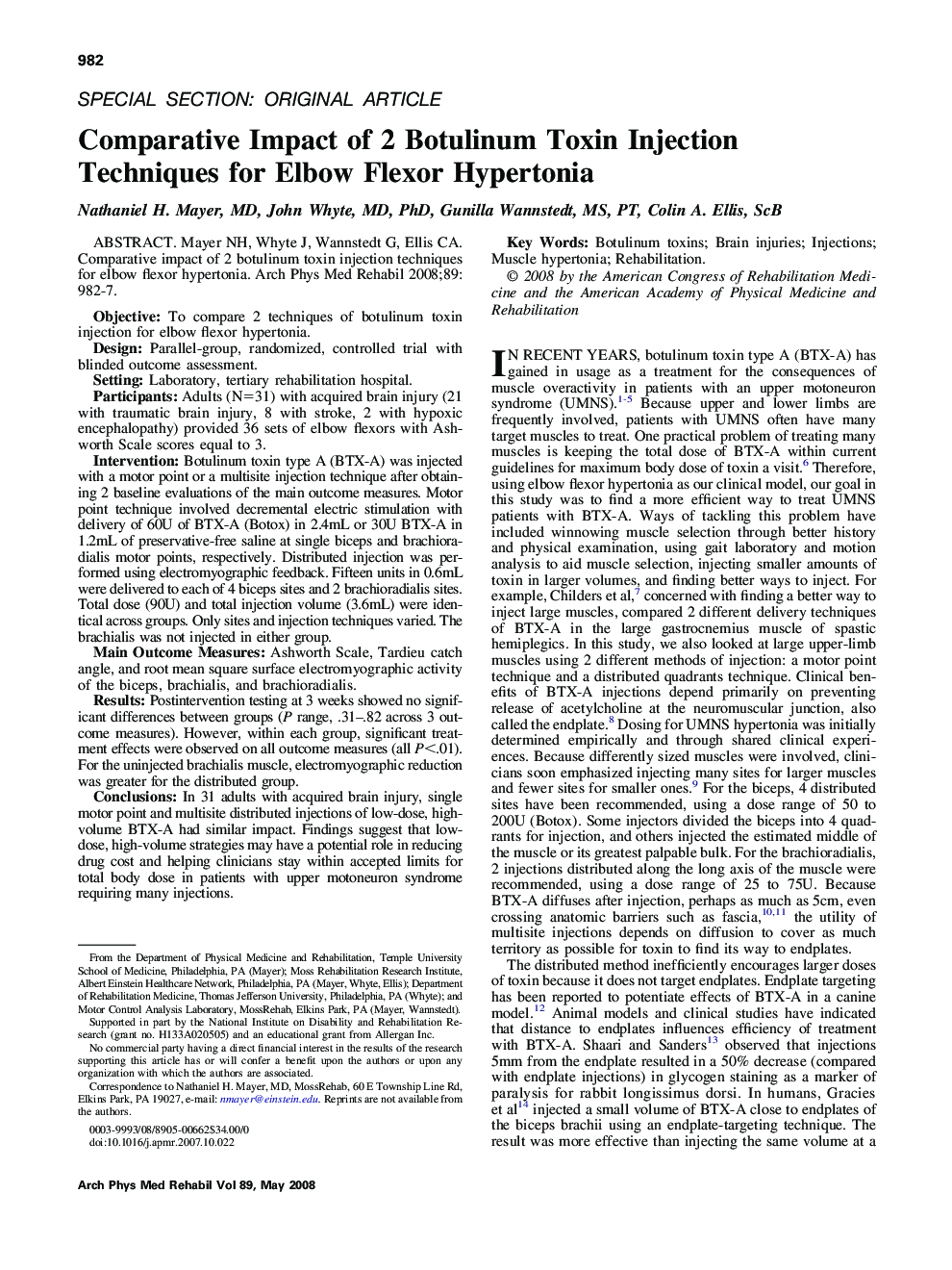| کد مقاله | کد نشریه | سال انتشار | مقاله انگلیسی | نسخه تمام متن |
|---|---|---|---|---|
| 3450767 | 1595779 | 2008 | 6 صفحه PDF | دانلود رایگان |

Mayer NH, Whyte J, Wannstedt G, Ellis CA. Comparative impact of 2 botulinum toxin injection techniques for elbow flexor hypertonia.ObjectiveTo compare 2 techniques of botulinum toxin injection for elbow flexor hypertonia.DesignParallel-group, randomized, controlled trial with blinded outcome assessment.SettingLaboratory, tertiary rehabilitation hospital.ParticipantsAdults (N=31) with acquired brain injury (21 with traumatic brain injury, 8 with stroke, 2 with hypoxic encephalopathy) provided 36 sets of elbow flexors with Ashworth Scale scores equal to 3.InterventionBotulinum toxin type A (BTX-A) was injected with a motor point or a multisite injection technique after obtaining 2 baseline evaluations of the main outcome measures. Motor point technique involved decremental electric stimulation with delivery of 60U of BTX-A (Botox) in 2.4mL or 30U BTX-A in 1.2mL of preservative-free saline at single biceps and brachioradialis motor points, respectively. Distributed injection was performed using electromyographic feedback. Fifteen units in 0.6mL were delivered to each of 4 biceps sites and 2 brachioradialis sites. Total dose (90U) and total injection volume (3.6mL) were identical across groups. Only sites and injection techniques varied. The brachialis was not injected in either group.Main Outcome MeasuresAshworth Scale, Tardieu catch angle, and root mean square surface electromyographic activity of the biceps, brachialis, and brachioradialis.ResultsPostintervention testing at 3 weeks showed no significant differences between groups (P range, .31–.82 across 3 outcome measures). However, within each group, significant treatment effects were observed on all outcome measures (all P<.01). For the uninjected brachialis muscle, electromyographic reduction was greater for the distributed group.ConclusionsIn 31 adults with acquired brain injury, single motor point and multisite distributed injections of low-dose, high-volume BTX-A had similar impact. Findings suggest that low-dose, high-volume strategies may have a potential role in reducing drug cost and helping clinicians stay within accepted limits for total body dose in patients with upper motoneuron syndrome requiring many injections.
Journal: Archives of Physical Medicine and Rehabilitation - Volume 89, Issue 5, May 2008, Pages 982–987